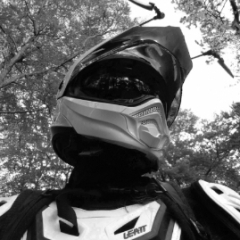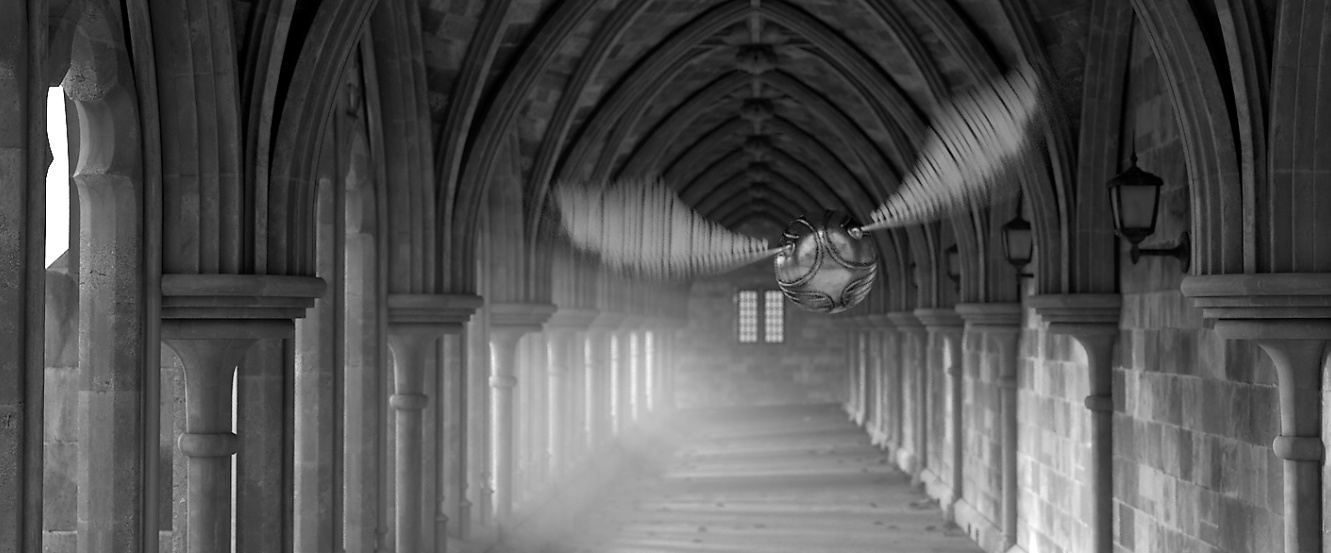-
Posts
17,889 -
Joined
-
Days Won
717
Content Type
Profiles
Blogs
Forums
Gallery
Pipeline Tools
3D Wiki
Plugin List
Store
Downloads
Everything posted by Cerbera
-
There are 2 levels of modelling in the world (well 3, but we won't count the people who can't yet do it) - one, where the topology does the minimum to get the job done, which is what most people do most of the time, and rightly so, given budgets, and time being money and life being too short etc etc. And then there is a small cadre of people who would rather take a bit of extra time to create something truly satisfying on every level, (and I am definitely prepared to accept that OCD might be one of those levels !), regardless of the importance of that extra attention to the final rendered result. In fact we're not even looking at the rendered result a lot of the time - we care mainly about wires 🙂 As we know, there are many ways to solve every topological dilemma, and that second level is merely a place where instead of just accepting the first result you find that works, we go on and try at least 5 others, just to know that we 'could' find the most perfect topology if we had to - it may have limited practical value, but I can't help feeling it does boost modelling XP to have challenged yourself to model something 5 times with every one being somehow 'better' than the previous versions 🙂 It remains somewhat nebulous precisely what criteria constitutes 'perfect topology' but evenness, symmetry, tidiness, lack of SDS wrenching, fully supported prime loops, any clever 'solves' there is opportunity for, efficient loop re-use and general polygonal efficiency are all contributory factors, although I would say (and as you noted above) that poly efficiency is the first thing to be let go in the service of other aspects, now we live in a world where unreal can toss off 40 billion triangles a frame ! CBR
-

Collider Body doesn't work correcly with Effectors
Cerbera replied to Emeric Ressy's topic in Cinema 4D
Almost impossible to see what might be wrong from a single small screenshot. Pls upload project file. CBR -
Sure. Start with outlining the 3 smaller discs using 8 sided disc objects with an inner radius, so you get 3 rings. Get another one of those that will be the perimeter of the outer ring, and will need correspondingly more segments ( I went with 20). Then it's just a case of CO&D'ing those, then patching things together, and popping it under SDS. If you're worried about SDS wrenching, need better evenness and border integrity, you can add another loop like so... CBR
-
Hard to tell without scene file but I would venture that is not the best way of fixing that. I would put the phong tag back to whatever it was doing, but then activate the phong break options in the bevel deformer. CBR
-
-

Very heavy texture size statistics in Redshift. What do they mean?
Cerbera replied to scifidesigner's topic in Cinema 4D
Yep, exactly that ! CBR -
Whatever the reason is (and it'll be something to do with display settings for the joints, we won't be able to see it with just the OM screenshots - we'll be needing the scene file, as usual... so copy the whole deer to a new file, and upload that so we can see its relevant settings ! CBR
-
Welcome to the Core 🙂 Good to have you here Payne.... may your 3Ds be brilliant and your learnings rewarding ! CBR
-
Er... no. 🙂 The only function of the Connect Object is to make Cinema treat children of it as if they were a single mesh, and to optionally weld the near-coincident points thereof. It has no effect on the geometry within it other than that. However, that alone is a much-needed function, in all sorts of circumstances, and therefore makes the Connect one of the most useful generators in Cinema. But it doesn't have any boolean functionality, which your setup would seem to require. In your file, you seem to be hoping you can get something like a metaball type result, or that you can use Connect to somehow eradicate the inner walls in your overlapping source objects, which is incorrect - it's never been capable of that. The reason it looks janky in your file is because you've just mashed a load of spheres together, and so the connect will simply try and weld any proximal points that fall under its threshold, and will leave any that don't unwelded, and thereby create a ton of internal geometry and non manifold edges that can't possibly achieve what you're thinking of. Also, attempting to SDS the result of this topological catastrophe will further guarantee broken surfaces and horrible appearance. Contrary to what we might first think, Metaballs probably isn't the way to go here either. That depends very much on the hull value set therein (and specific tag settings if applicable), but because the size of the source objects is taken into account it will be almost impossible to stop spheres in your current setup just becoming a single blob because they actually overlap, and there is an extra big one at the centre ! Metaballs work rather specifically with object proximity, and less so (arguably not at all for the purposes of what you are trying to achieve here) with object overlap. The volume builder however, can do what I imagine you are thinking of, with the right settings, and you can get a perfect surface AND near perfect topology if you combine either of those with Z-ReMesher as demo'd below (S26+ only). Here I put all your spheres inside the volume builder, selected them individually to tick 'perfect primitive', ramped voxel size down to 1cm and added an SD smooth at the top of the stack in Mean Curvature mode (80%) which is what allows you to get the tight but smooth seams between at the 'joins'. That went under a volume mesher with default settings, and that in turn got ZRM'd to just 2% of its original polycount with both Z and X symmetry options ticked. Without the ZRM you can still get a nice rendered result, but it will be ludicrously high poly - up in the 10s of millions - but at least you won't need to SDS it ! Or you can try the older Instant meshes-based Remesher (S24+) which will do a decent job, albeit nowhere near as good as ZRM. CBR
-
It is to do with maths but only tangentially 🙂 Its more to do with how close the camera is to the object, what is focal length is, and what the scene scale is. Proper DoF works at real world scale with realistic camera values, so if your scene scale is too big, then you will need an f-stop of something like 0.01-0.1 (much smaller than you could set in the real world) to get it to show if your camera is not parked inches away from the focus target. Changing scene units down like you read usually reduces things to within more real-world values, which is why the effect of this is much the same. CBR
-
Can I ask a completely noob-style question - having barely had time to get into the nodes so far myself ? How do we we get this result out to the standard Object manager ? CBR
-

Circle Cloner Object Plain Effector Falloff not working
Cerbera replied to Wessel van Wegen1's topic in Cinema 4D
Welcome to the Core 🙂 The falloff shapes do work. They just don't do what you expect they might in this situation. The reason that they all move at the same time is because of the way you have built that cloner, and where the axis of each clone is, which is in the same place, at its centre. Seeing as how effectors work with axes of objects or clones to determine whether they are affected or not by any proximal field, then that explains why they all move at the same time - their axes are all coincident ! This question has been asked and answered before here ! The trouble will be finding it with search... these things tend to be titled not always in the most helpful way for later finding. Unfortunately this is not my area of expertise, and I don't remember what the solution was ! But there are lots of Mograph guys here, and one of them should pop in at some point to show us a way that does work ! In the meantime, please complete your profile so it is clear with each post which version you are working with. CBR -
Yep. it'll be that or the Volume builder, and TBH I think the boole will do a better, clearer, sharper job unless you need a more organic homogenous look, which actually I think your reference does have; the tubes in that seem to be melded together, which boole cannot do. But it doesn't matter that the boole is intensive if it's for a still shot because you can always CStO it afterwards to get a fast mesh copy. And the VB solution isn't going to be exactly quick on the calculations either, especially if you use the live boole as the source for it ! You'll be needing a very low voxel size to capture all that detail, and probably Laplacian flow to smooth it. CBR
-
Oh there you are ! Thought you'd evaporated recently !! 🙂 CBR
-
Not without something like the Push Apart effector AFAIK... CBR
-
Let's not make this thread about NFTs, lols 😉 CBR
-
I hope you're right, but recent experience suggests otherwise I fear 🙂 I suspect photogrammetry will fail if it's just a brown plain paper bag - not enough surface details for it to accurately recreate the form - we tried doing something similar on some matte black golf clubs the other day, and I can't tell you how hard that failed !!! But if you covered the brown paper in lots of little white dots maybe, or if there were tons of creases so it had enough details and areas not lost to single homogenous colour to plot the shape ?!! CBR
-
It's the hardest type of deformation to get for most DCC apps, and the question of how best to do thin paper comes up time and time again. I have recently seen an incredible white paper on some emergent technology that specialises in the simulation and crumpling of paper and wraps like this, and does it majestically, but obviously that is a way off from actual implementation in anyone's software ! And so yes, for now I am forced to agree that the best result we can get with the current tools is some combination of hand modelling, sculpting and texture work. I will call out the magnet tool / relax-mode smooth deformer technique as being something that can probably help with this if the geo is dense enough - although it tends to produce wrinkles that are rounder than you would ideally want for this, it can get folds and creases realistically tight, which might be a suitable starting point for any subsequent sculptings. CBR
-
Always upload your scene file with these sorts of questions, Ras - there are so many factors that can affect this it's rather hard to direct you without any information about what your scene scale or other key settings might be ! Friction probably isn't the answer - you don't want much of that - so it is free to slide past itself. Instead I would be keyframing damping in the Master Simulation settings (under project) from about 2% to about 100% shortly after they land ! Have a look at this scene file (original by Yan Ge), which you should cache before playback. noodle test CBR.c4d We could also ask people like @NWoolridge, who has done a lot more experimentation with new sim stuff than I have... CBR
-
I am not sure that is going to be possible. The cloner is a parametric object, so its axis parameters remain live and are not exposed / addressable until it is made editable. You could try putting it in a connect though (weld off), which does have a center axis option ? CBR
-
Yes it's context sensitive, which is usually what we want. But I think you mean Object info, and thats in the Object Manager under Object / Info at the top...you can get object stats or scene stats there. CBR


